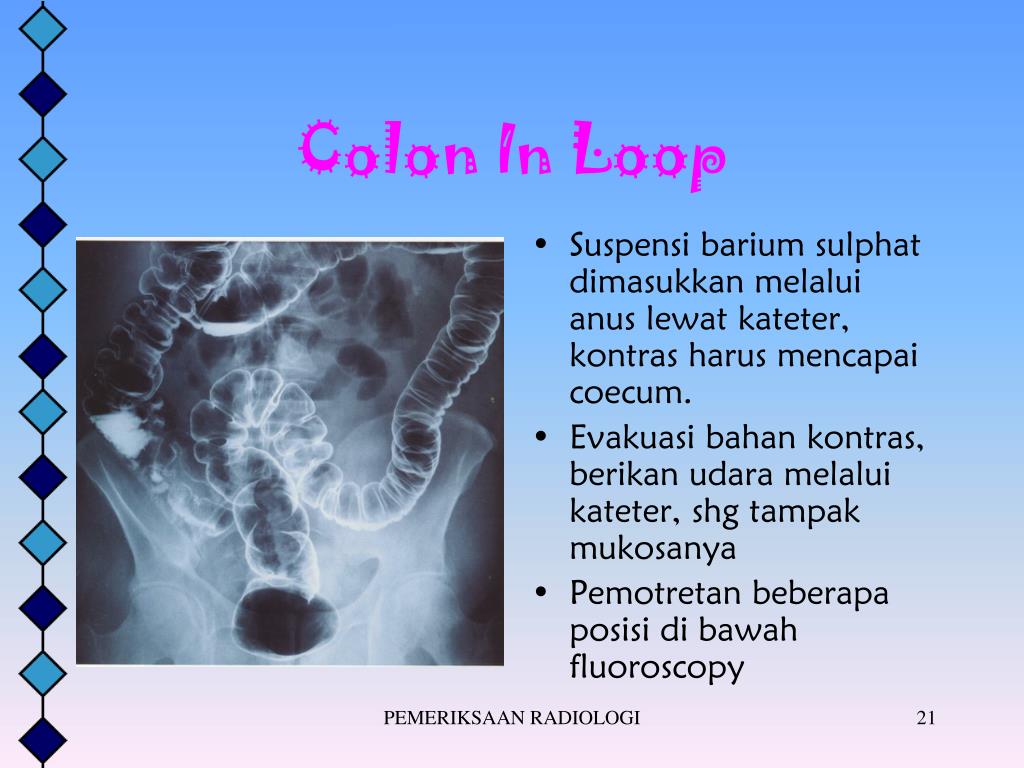What can a barium swallow detect. Barium Swallow Test: Comprehensive Guide to Diagnosis and Procedure
What is a barium swallow test. How is it performed. What conditions can it detect. What are the potential side effects. Who is a suitable candidate for this procedure. How to prepare for a barium swallow test. What to expect during and after the procedure.
Understanding the Barium Swallow Test
A barium swallow test, also known as cine esophagram, swallowing study, esophagography, modified barium swallow study, or video fluoroscopy swallow study, is a specialized imaging procedure that utilizes barium and X-rays to create detailed images of the upper gastrointestinal (GI) tract. This diagnostic tool is invaluable for examining the back of the mouth, throat (pharynx), and esophagus.
The test involves ingesting a chalky white substance called barium, which enhances the visibility of the GI tract on X-ray images. This allows radiologists to evaluate the size, shape, and function of the pharynx and esophagus, providing crucial information that might not be visible on standard X-rays.
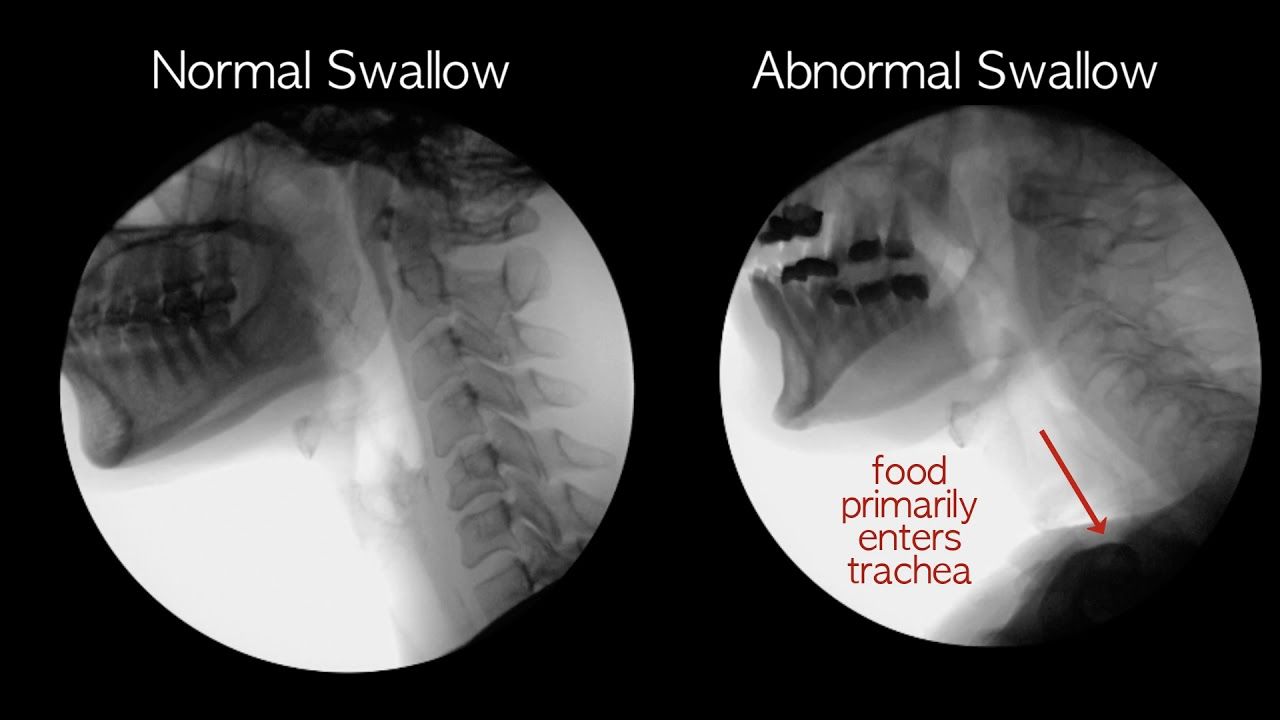
Why is a Barium Swallow Test Performed?
Healthcare providers may recommend a barium swallow test for various reasons:
- To diagnose conditions affecting the upper GI tract
- To evaluate swallowing difficulties
- To detect structural abnormalities
- To assess the effectiveness of treatments for GI disorders
Is a barium swallow test painful? Generally, the procedure is painless, although some patients may experience slight discomfort due to the chalky taste of the barium solution or the positioning required during the test.
Conditions Detectable Through a Barium Swallow Test
A barium swallow test is a versatile diagnostic tool capable of identifying various conditions affecting the upper GI tract. Some of the conditions it can help detect include:
- Hiatal hernia: A condition where the stomach protrudes through the diaphragm into the chest cavity
- Inflammation or blockages in the upper GI tract
- Benign or malignant tumors in the head, neck, pharynx, and esophagus
- Gastric ulcers
- Gastroesophageal reflux disease (GERD)
- Structural abnormalities such as strictures, polyps, or diverticula
- Esophageal varices: Enlarged veins in the esophagus
- Achalasia: A condition where the lower esophageal sphincter fails to relax properly
How accurate is a barium swallow test in detecting these conditions? While the test is highly effective in visualizing structural abnormalities, its accuracy can vary depending on the specific condition being evaluated. In some cases, additional diagnostic tests may be necessary for a definitive diagnosis.

Candidates for a Barium Swallow Test
While a barium swallow test can be beneficial for many patients, it may not be suitable for everyone. Ideal candidates for this procedure include individuals experiencing:
- Difficulty swallowing (dysphagia)
- Persistent heartburn or acid reflux
- Unexplained chest or abdominal pain
- Suspected structural abnormalities in the upper GI tract
- Recurrent vomiting or regurgitation
Are there any contraindications for a barium swallow test? Yes, certain conditions may preclude a patient from undergoing this procedure:
- Tear or hole in the esophagus or intestines
- Severe constipation
- Swallowing difficulties that could lead to aspiration of barium into the lungs
- Pregnancy
It’s crucial for patients to discuss their medical history and any concerns with their healthcare provider before scheduling a barium swallow test.
Preparing for a Barium Swallow Test
Proper preparation is essential for ensuring accurate results from a barium swallow test. Patients should follow these guidelines:
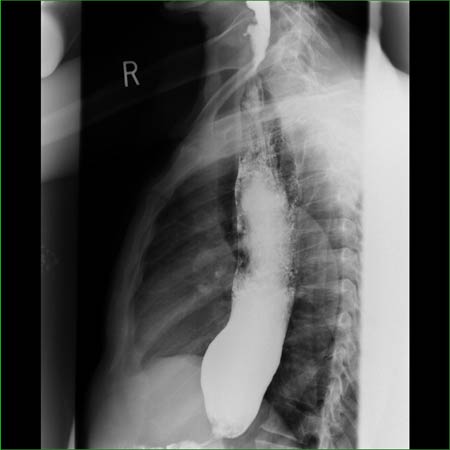
- Fast for 6-12 hours before the test, as directed by your healthcare provider
- Avoid smoking and chewing gum on the day of the test
- Inform your doctor about any medications you’re taking, as some may need to be temporarily discontinued
- Remove any metal objects, such as jewelry or dentures, before the procedure
- Wear comfortable clothing that doesn’t have metal zippers or buttons
What should you bring to a barium swallow test? It’s advisable to bring a list of your current medications, any relevant medical records, and a form of identification. You may also want to bring a change of clothes in case of barium spills.
The Barium Swallow Test Procedure
A barium swallow test is typically performed in a radiology department by a trained technician. The procedure usually takes about 30 minutes to complete. Here’s what to expect during the test:
- You’ll be positioned on an X-ray table
- The technician will give you a barium drink to swallow
- A series of X-rays will be taken as the barium travels through your pharynx
- You’ll be given another, thinner barium drink
- More X-rays will be taken as the barium moves through your esophagus
In many cases, fluoroscopy (a continuous X-ray beam) is used during the procedure to evaluate movement through your GI tract in real-time.

Does a barium swallow test require sedation? Typically, no sedation is required for this procedure. However, if you’re anxious about the test, discuss your concerns with your healthcare provider beforehand.
Potential Side Effects and Risks
While a barium swallow test is generally considered safe, there are some potential side effects and risks to be aware of:
- Constipation or fecal impaction if the barium is not completely expelled from the body
- Allergic reactions to the barium solution (rare)
- Radiation exposure, although the amount is generally considered low
To mitigate the risk of constipation, patients are advised to drink plenty of fluids and eat high-fiber foods after the procedure. In some cases, a doctor may prescribe a laxative to help move the barium through the digestive tract.
Are there any long-term risks associated with barium swallow tests? While the radiation exposure from a single test is minimal, repeated tests over time may increase the cumulative radiation exposure. It’s important to discuss the necessity and frequency of these tests with your healthcare provider.

Recovery and Aftercare
Recovery from a barium swallow test is typically straightforward. Most patients can return to their normal activities immediately after the procedure. However, there are some important aftercare instructions to follow:
- Drink plenty of water to help flush the barium from your system
- Eat high-fiber foods to promote bowel movements
- Expect white or light-colored stools for a day or two after the test
- Monitor for any unusual symptoms or side effects
When should you contact your doctor after a barium swallow test? If you experience severe abdominal pain, inability to have a bowel movement, or unusually small stools, contact your healthcare provider immediately.
Interpreting Barium Swallow Test Results
After the barium swallow test, a radiologist will analyze the images and provide a detailed report to your referring physician. The results typically become available within a few days. The report may include information about:
- The size and shape of your pharynx and esophagus
- The presence of any structural abnormalities
- The efficiency of your swallowing mechanism
- Any signs of reflux or other functional issues
How are barium swallow test results used in treatment planning? Based on the findings, your doctor may recommend further tests, prescribe medications, suggest lifestyle changes, or in some cases, consider surgical interventions. The results provide valuable information that helps guide the most appropriate treatment approach for your specific condition.

Follow-up Care
Depending on the results of your barium swallow test, your healthcare provider may recommend various follow-up actions:
- Additional diagnostic tests to confirm or further investigate findings
- Referral to a specialist, such as a gastroenterologist or ENT doctor
- Lifestyle modifications to manage symptoms
- Medication adjustments
- Periodic follow-up tests to monitor your condition
It’s crucial to attend all follow-up appointments and adhere to your doctor’s recommendations to ensure optimal management of your condition.
Alternatives to Barium Swallow Tests
While barium swallow tests are valuable diagnostic tools, there are alternative procedures that may be recommended in certain situations:
- Endoscopy: A procedure that uses a flexible tube with a camera to examine the upper GI tract directly
- CT scan: Provides detailed cross-sectional images of the GI tract
- MRI: Uses magnetic fields and radio waves to create detailed images without radiation
- Esophageal manometry: Measures the strength and coordination of esophageal muscles
- pH monitoring: Assesses the level of acid reflux in the esophagus
How do these alternatives compare to a barium swallow test? Each of these procedures has its own advantages and limitations. The choice of test depends on the specific symptoms, suspected conditions, and individual patient factors. Your healthcare provider will recommend the most appropriate diagnostic approach based on your unique situation.

Combining Diagnostic Approaches
In some cases, a combination of diagnostic tests may be necessary to obtain a comprehensive understanding of a patient’s condition. For example:
- A barium swallow test may be performed in conjunction with an esophagogastroduodenoscopy (EGD)
- It may be part of a broader upper GI series that evaluates the entire upper GI tract
- Results from a barium swallow test may guide the focus of subsequent endoscopic examinations
This multi-faceted approach allows healthcare providers to gather complementary information, leading to more accurate diagnoses and tailored treatment plans.
Technological Advancements in Barium Swallow Testing
The field of diagnostic imaging is continuously evolving, and barium swallow testing has benefited from several technological advancements:
- Digital radiography: Provides higher quality images with lower radiation exposure
- 3D imaging: Allows for more detailed visualization of structural abnormalities
- Video fluoroscopy: Enables real-time evaluation of swallowing dynamics
- AI-assisted analysis: Helps in identifying subtle abnormalities and improving diagnostic accuracy
How have these advancements improved patient care? These technological improvements have enhanced the diagnostic capabilities of barium swallow tests, allowing for earlier detection of conditions, more precise treatment planning, and potentially better patient outcomes.

Future Directions
Research in the field of diagnostic imaging continues to push the boundaries of what’s possible. Some areas of ongoing investigation include:
- Development of alternative contrast agents with improved safety profiles
- Integration of virtual reality technologies for more immersive diagnostic experiences
- Refinement of AI algorithms for automated image analysis and risk stratification
- Exploration of combined imaging modalities for comprehensive GI tract evaluation
These emerging technologies hold the promise of further enhancing the diagnostic capabilities of barium swallow tests and related procedures, potentially leading to more personalized and effective patient care in the future.
Barium Swallow | Oral, Laryngeal and Thyroid Cancer
What is a barium swallow?
A barium swallow is an x-ray imaging test that helps your doctor get a detailed visual of the back of the mouth, throat and esophagus to help diagnose oral cancer or other diseases.
During a barium swallow, an x-ray will take precise images of the upper gastrointestinal tract (GI) tract as liquid barium travels through it. The barium will help highlight any abnormalities as well as show the motion of your swallowing on the x-ray image.
Who is a candidate for a barium swallow
A barium swallow may be able to help diagnose conditions such as:
- Hiatal hernia — where your stomach has moved up into or beside the esophagus
- Inflammation or blockages in the upper gastrointestinal tract
- Benign or malignant tumors (non-cancerous and cancerous) in the head, neck, pharynx and esophagus
- Gastric ulcers
- Gastroesophageal reflux disease (GERD)
- Structural conditions — conditions such as strictures (narrowing), polyps (growths), diverticula (pouches)
- Esophageal varices — enlarged veins
- Achalasia —medical condition where the lower esophageal sphincter won’t relax to allow food into the stomach
You may not be able to have a barium swallow if you have any of the following conditions:
- Tear or hole in the esophagus or intestines
- Severe constipation
- Problems swallowing that could accidentally allow barium to go into the lungs
- You are pregnant
What are the side effects associated with a barium swallow
Some people experience constipation or fecal impaction if the barium is not completely expelled from the body after the procedure. If you experience constipation or fecal impaction, drink plenty of fluids and eat high-fiber foods to move the barium through the digestive tract. If that doesn’t work, your doctor can prescribe a laxative.
If you experience constipation or fecal impaction, drink plenty of fluids and eat high-fiber foods to move the barium through the digestive tract. If that doesn’t work, your doctor can prescribe a laxative.
There are also side effects associated with the radiation that is used in the test. The risks associated with radiation exposure increase as you have more x-ray exams.
If you are pregnant or suspect you are pregnant, tell your doctor. Exposure to radiation during pregnancy can cause birth defects in unborn fetuses.
What to expect during a barium swallow
A barium swallow is performed in radiology by a radiology tech. The entire procedure takes approximately 30 minutes, and you should have results within a few days.
In preparation for the procedure, your technician will position you on the x-ray table, give you a barium drink and take a series of x-rays as the barium travels through the pharynx. Once the first set of x-rays has been taken, your technician will give you another, thinner barium drink and will take x-rays as the barium moves through the esophagus.
Barium is a chalky white substance that is used in the GI tract to help it show up on x-ray. Using barium, your doctor will be able to evaluate the size and shape of the pharynx and esophagus.
A barium swallow can be done as a standalone procedure or as a part of an upper GI series of tests that evaluate the entire upper GI tract. During this procedure, a fluoroscopy (a continuous x-ray beam) is used during a barium swallow to evaluate movement through your GI tract. In many cases, a barium swallow accompanies an esophagogastroduodenoscopy (EGD) or as a part of an upper GI and small bowel testing.
Recovery from a barium swallow
You will go home after a barium swallow and can return to your normal activities right away. You may experience constipation or notice that your bowel movements are lighter. Once the barium has passed from the body, your bowel function should return to normal.
If you experience any of the following side effects, call your doctor right away:
- Inability to have a bowel movement
- Pain in the abdomen
- Smaller than usual stools
Find a radiologist nearby
Mercy Health locations that can treat you
Barium Swallow | Johns Hopkins Medicine
What is a barium swallow test?
A barium swallow test (cine esophagram, swallowing study, esophagography, modified barium swallow study, video fluoroscopy swallow study) is a special type of imaging test that uses barium and X-rays to create images of your upper gastrointestinal (GI) tract. Your upper GI tract includes the back of your mouth and throat (pharynx) and your esophagus.
Your upper GI tract includes the back of your mouth and throat (pharynx) and your esophagus.
Barium is used during a swallowing test to make certain areas of the body show up more clearly on an X-ray. The radiologist will be able to see size and shape of the pharynx and esophagus. He or she will also be able see how you swallow. These details might not be seen on a standard X-ray. Barium is used only for imaging tests for the GI tract.
A barium swallow test may be used by itself or as part of an upper GI series. This series looks at your esophagus, stomach, and the first part of the small intestine (duodenum).
Fluoroscopy is often used during a barium swallow test. Fluoroscopy is a kind of X-ray “movie.”
Why is a swallow test done?
A barium swallow test may be done to look for and diagnose problems in
the pharynx and esophagus. You may need a barium swallow test if your
healthcare provider thinks that you have:
Cancer of the
head and neck, pharynx, or
esophagus
Hiatal hernia.
 This means that your stomach has moved up into or alongside
This means that your stomach has moved up into or alongside
the esophagus.Structural problems, such as pouches (diverticula), narrowing
(strictures), or growths (polyps)Enlarged veins (esophageal varices)
Muscle disorders, such as difficulty swallowing (dysphagia) or spasms
Achalasia
. This is a condition in which the lower esophageal sphincter
muscle doesn’t relax and allow food to pass into the stomach.Gastroesophageal reflux disease (GERD)
and ulcers
Your healthcare provider may have other reasons to recommend a barium
swallow test.
What are the risks of a barium swallow test?
The risks of a barium swallow test may include problems from radiation
exposure, birth defects and intestinal issues. You should ask your
You should ask your
healthcare provider about the risks as they apply to you.
How can I manage my X-ray exposure?
You may want to ask your healthcare provider about the amount of radiation
used during the swallowing test. Consider writing down all X-rays you get,
including past scans and X-rays for other health reasons. Show this list to
your provider. The risks of radiation exposure may be tied to the number of
X-rays you have and the X-ray treatments you have over time.
How will a barium swallow test affect my stool?
You may have constipation or impacted stool after the swallowing test if
all of the barium does not pass out of your body.
Is it safe to have a barium swallow test while pregnant?
You should also not have a barium swallow test if you are pregnant.
Radiation exposure during pregnancy may lead to birth defects. Tell your
provider if you are pregnant or think you may be pregnant.
When should I avoid a barium swallow test?
You should avoid a barium swallow test if you have any of the following:
A tear or hole in your esophagus or intestines (perforation)
Blockage in your intestines or severe constipation
Severe problems with swallowing.
 This makes it more likely that
This makes it more likely that
barium would accidentally go into your lungs (aspiration).
You may have other risks depending on your specific health condition. Tell
your provider if you are allergic to or sensitive to medicines, contrast
dyes, local anesthesia, iodine, or latex. Be sure to talk with your
provider about any concerns you have before the procedure.
How do I prepare for a barium swallow test?
You can prepare for a barium swallow test by considering the following:
Your healthcare provider will explain the barium swallow test to
you. Ask him or her any questions you have about the swallowing
test.You may be asked to sign a consent form that gives permission to do
the swallowing test. Read the form carefully and ask questions if
anything is not clear.You will need to stop eating and drinking for about 8 hours before
the swallowing test. Generally, this means after midnight.
Generally, this means after midnight.Tell your provider if you are pregnant or think you may be pregnant
before scheduling a barium swallow test.Tell your provider if you are sensitive to or are allergic to any
medicines, latex, tape, or anesthetic medicines (local and general)
before scheduling a swallowing test.Tell your provider about all medicines you are taking. This
includes prescriptions, over-the-counter medicines, and herbal
supplements. You may need to stop taking these before the
swallowing test.Tell your healthcare provider if you have had a recent barium
swallow or upper GI test. This may make it harder to get good
X-rays of the lower GI area during a barium swallow test.Follow any other instructions your provider gives you to get ready
for the swallowing test.
What does a barium swallow test involve?
Generally, a barium swallow test involves the following process:
You’ll be asked to remove any clothing, jewelry, or other objects
that may get in the way of the swallowing test.You may be asked to remove clothing. If so, you will be given a
gown to wear.You will lie on an X-ray table that can move you from a horizontal
to an upright position. You may also be asked to change positions
during the swallowing test. For example, you may need to lie on
your side, back, or stomach.The radiologist may take X-rays of your chest and belly (abdomen)
first.The radiologist will ask you to take a swallow of a thick, chalky
barium drink. The barium is usually flavored, but it may not taste
very good.As you swallow the barium, the radiologist will take single
pictures, a series of X-rays, or fluoroscopy to watch the barium
moving through your mouth and throat.
You may be asked to hold your breath at certain times during the
test.You will be given a thinner barium drink to swallow. The
radiologist will use X-rays or fluoroscopy to watch the barium go
down your esophagus. You may also be asked to swallow a barium
tablet. This is a small pill that can help to show certain problems
in the esophagus.Once the radiologist has taken all of the X-rays, you’ll be helped
from the table.
A barium swallow test may be performed as an outpatient procedure or as
part of your stay in a hospital. The way the test is done may vary
depending on your condition and your healthcare provider’s practices.
What happens after a barium swallow test?
You may go back to your normal diet and activities after a barium swallow
test, unless your healthcare provider tells you otherwise.
How do I manage constipation after a swallowing test?
Barium may cause constipation or impacted stool after the swallowing test
if it isn’t completely cleared from your body. You can manage constipation
You can manage constipation
by drinking plenty of fluids and eating foods high in fiber to help the
rest of the barium leave your body. You may also be given a laxative to
help with this.
Your bowel movements may be white or lighter in color until all the barium
has left your body.
What are some serious side effects after a barium swallow test?
Call your healthcare provider right away if any of these happen after your
barium swallow test:
Trouble with bowel movements or you are unable to have a bowel
movement or pass gasPain or swelling of the abdomen
Stools that are smaller in size than normal
Fever
Your healthcare provider may give you other instructions, depending on your
situation.
Swallowing Center
The Johns Hopkins Swallowing Center offers specialized swallowing evaluation, diagnosis and treatment for patients with swallowing disorders.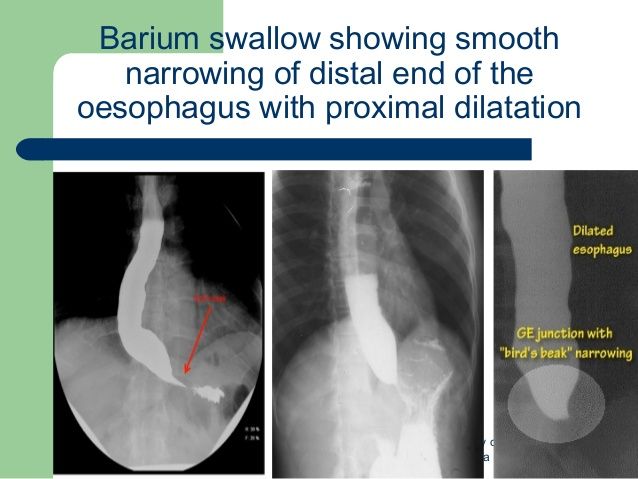 Our multi-specialty team includes laryngologists, speech-language pathologists and other specialists, who work together to provide you with personalized and compassionate care.
Our multi-specialty team includes laryngologists, speech-language pathologists and other specialists, who work together to provide you with personalized and compassionate care.
Learn more about the Swallowing Center
What an x-ray of the stomach with barium shows
In diseases of the gastrointestinal tract, a number of examinations are performed. Among them, x-ray of the stomach, gastroscopy, ultrasound, tomography, fluoroscopy. In this article, we will look at what an X-ray of the stomach with barium shows, what is better than an X-ray of the stomach or FGDS, how and why these procedures are performed. X-ray of the upper gastrointestinal tract is prescribed if the doctor suggests a stomach ulcer, gastritis, neoplasms in the form of a tumor, polyps, and a hernia of the stomach. And also this is an indispensable study in case of suspected presence of a foreign body.
What does the diagnosis show?
Examination allows diagnosing inflammatory processes, displacement or prolapse of the stomach, changes in its size, diverticula, as well as assessing the condition of the walls of the stomach. The procedure is carried out with barium, since this drug reflects X-rays and makes it possible to assess the state of the digestive system, to see their size, structure and integrity. If a hernia of the esophageal opening of the diaphragm is suspected, a series of examinations is carried out. Among them, an x-ray on HH, which allows you to establish the area where the patency is impaired and differentiate the hernia from other pathologies that have similar symptoms.
The procedure is carried out with barium, since this drug reflects X-rays and makes it possible to assess the state of the digestive system, to see their size, structure and integrity. If a hernia of the esophageal opening of the diaphragm is suspected, a series of examinations is carried out. Among them, an x-ray on HH, which allows you to establish the area where the patency is impaired and differentiate the hernia from other pathologies that have similar symptoms.
If you are concerned about any health problem, sign up for a diagnosis. The success of treatment depends on the correct diagnosis.
How is an x-ray of the stomach and esophagus done with barium?
Many people are interested in what and how they drink with an X-ray of the stomach with barium. For diagnostics, barium sulfate is used, the drug is taken orally, dissolving in water. It is completely safe for the body, looks like a white suspension, tastes like chalk or calcium. The first shot is taken before barium is consumed. Then the patient drinks a few sips of the drug and begins the study of the esophagus. After a few minutes, the patient finishes drinking the solution, after which the radiologist continues to examine the stomach, taking pictures as the barium moves. During the diagnosis, the patient is asked to lie on the table and periodically change position, following the instructions of the doctor. For a clearer image, the radiologist may ask the patient to hold their breath at the time of exposure. The study lasts from 20 minutes to an hour. Next, the doctor examines a series of images and writes a conclusion.
Then the patient drinks a few sips of the drug and begins the study of the esophagus. After a few minutes, the patient finishes drinking the solution, after which the radiologist continues to examine the stomach, taking pictures as the barium moves. During the diagnosis, the patient is asked to lie on the table and periodically change position, following the instructions of the doctor. For a clearer image, the radiologist may ask the patient to hold their breath at the time of exposure. The study lasts from 20 minutes to an hour. Next, the doctor examines a series of images and writes a conclusion.
When diseases are detected, many patients are interested in how often they can take x-rays, waiting for a re-examination appointment. There is no single answer to this question, since the doctor, choosing a diagnostic method, is guided by the individual circumstances of a particular patient. Age, condition, radiation dose and the feasibility of the procedure are taken into account.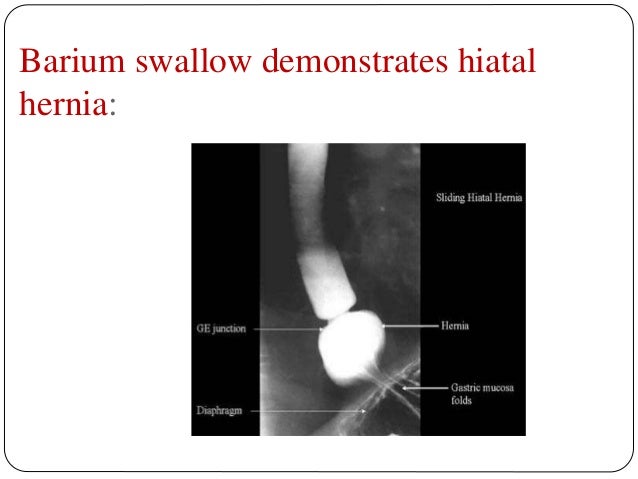
Which is better gastroscopy or stomach x-ray?
A more popular examination of the esophagus is gastroscopy. Gastroscopy, also known as FGDS, is an endoscopic examination of the upper gastrointestinal tract. The study is carried out using an endoscope by inserting it through the mouth, which makes the procedure extremely unpleasant. The advantage of gastroscopy is higher information content compared to radiography and the absence of radiation. In addition, if necessary, the doctor can take a tissue sample for further histological analysis right during the EGD. In fact, diagnostics have different purposes and it is advisable to carry out both. The examination results complement each other and give a complete picture of the state of the esophagus, stomach and duodenum.
This article is posted for educational purposes only, does not replace a doctor’s appointment and should not be used for self-diagnosis.
February 11, 2019
Top 5 diagnostic centers
799 reviews
357 reviews
6952 reviews
8945 reviews
2 reviews
Show all clinics
X-ray examinations
X-ray examinations GAUZ SO City Clinical Hospital No. 40 2 What is a stomach fluoroscopy?
40 2 What is a stomach fluoroscopy?
Fluoroscopy of the stomach – x-ray examination of the pharynx, esophagus, stomach and duodenum with a contrast agent (barium).
This is an X-ray examination method. The dose of ionizing radiation received by the patient is small. The advantage of fluoroscopy is the ability to assess not only the anatomy, but also the function of organs: when you swallow a portion of a contrast agent, the radiologist observes not only the structure, but also the function of the esophagus, stomach, duodenum. In some cases, in addition to the contrast agent (suspension of barium sulfate), you are given an effervescent solution to drink so that the organs fill with air.
Can everyone get x-rays?
Pregnant women should not be tested because X-ray radiation can adversely affect the fetus.
Tell your doctor if you are allergic to barium or iodine contrast media.
How to prepare for the examination?
In order for the study to be successful, of high quality, you must come with an empty stomach. Therefore, before the study:
Therefore, before the study:
- Do not eat
- Do not drink
- Do not take medicines, especially antacids (acid reducers)!
- Do not chew gum or gummies
- Do not smoke after midnight
How is the study going?
You will be asked to partially undress, remove jewelry, dentures, glasses, and any metal objects that may be in the path of the X-ray beam. The laboratory assistant will help you to make yourself comfortable. You will be told how to swallow barium sulfate. Barium sulfate (colloquially – barium) – a contrast agent, absolutely tasteless, the density resembles a thick milkshake. The radiologist will monitor the passage of the barium in real time, in addition, he will take several x-rays, for this you will be asked to hold your breath. The radiologist can put pressure on your stomach to assess the passage of barium, its entry into different parts of the stomach.
In some cases, you will additionally be asked to drink an effervescent liquid so that the gas will stretch the stomach and straighten its walls.
Examination time 15-20 minutes.
When will I get my result?
It usually takes the doctor 1-2 hours to evaluate the test results, but in difficult cases it can take up to 24 hours. The legislation of the Russian Federation (Order of the Ministry of Health and Social Development No. 132) is given 24 hours to write a protocol and provide an opinion. This order provides for the doctor’s opportunity to consult with colleagues, to contact the attending physician and provides time to consult the literature. Therefore, if you do not want to wait, it would be better to come the next day, at any time convenient for you, and pick up the results.
Irrigoscopy is an x-ray examination of the intestine, in which a contrast agent is injected through the rectum. The study allows to identify polyps, obstruction, perforation and tumor formations.
Preparation for the study
Preparation for the study is a necessary and most important aspect of a successful implementation and includes: diet for 2 days + drug preparation on day 3 (on the eve of the study).
1, 2 day: diet
Exclude: grains, nuts, legumes, fresh and dried fruits and vegetables, dairy products, fatty meats and fish, mushrooms, spices, alcoholic and carbonated drinks, smoked meats, canned food.
Allowed: flour products without additives (raisins, poppy seeds, whole grains, etc.), cereals, eggs, low-fat meats and fish, mashed potatoes, kissels, clear juices, broths, scrambled eggs, honey, weak tea and coffee, still water.
Day 3: liquids + drug preparation
Avoid all solid foods.
It is allowed to take any clear liquids in unlimited quantities (broths, tea, coffee, juices without pulp, water).
In our clinic, we recommend preparing for the study with preparations based on polyethylene glycol (Moviprep, Fortrans). The regimen of the drug depends on the time of the study.
If there are contraindications to the use of polyethylene glycol preparations, check the preparation schedule with your doctor (individually).
Bring with you:
- Referral from the attending physician
- Results of sigmoidoscopy
- Results of previous examinations
- Drape
Is it possible for everyone to have barium enema ?
Pregnant women should not be tested because X-ray radiation can adversely affect the fetus.
How is the procedure?
You will be asked to partially undress, remove jewelry, dentures, glasses, and any metal objects that may be in the path of the X-ray beam. The technician will help you lie down comfortably on the X-ray table. A catheter will be inserted into your rectum and through it the intestine will be filled with a suspension of barium sulfate – a contrast agent. They’ll take some x-rays. The bowel will then be inflated with air so that the bowel walls can be assessed, and several more x-rays will be taken. At this time, you will have discomfort from stretching the intestines with air. The entire procedure takes 30-45 minutes.
You will then have a bowel movement. You may have a few more x-rays.
After examination:
For 3 days we recommend drinking plenty of fluids to speed up the elimination of the contrast from the intestines. The contrast agent is not absorbed in the intestines and has no effect on the body.
When will I get my result?
It usually takes the doctor 1-2 hours to evaluate the test results, but in difficult cases it can take up to 24 hours. The legislation of the Russian Federation (Order of the Ministry of Health and Social Development No. 132) is given 24 hours to write a protocol and provide an opinion. This order provides for the doctor’s opportunity to consult with colleagues, to contact the attending physician and provides time to consult the literature. Therefore, if you do not want to wait, it would be better to come the next day, at any time convenient for you, and pick up the results.
The legislation of the Russian Federation (Order of the Ministry of Health and Social Development No. 132) is given 24 hours to write a protocol and provide an opinion. This order provides for the doctor’s opportunity to consult with colleagues, to contact the attending physician and provides time to consult the literature. Therefore, if you do not want to wait, it would be better to come the next day, at any time convenient for you, and pick up the results.
Hysterosalpingography.
Hysterosalpingography is an x-ray examination of the uterus and fallopian tubes with the introduction of a contrast agent, which allows you to evaluate their patency.
For patients.
Phone for appointment (343) 2669772
Examination is carried out from 7th to 12th or 15th to 22nd day of the cycle,
cycle
You must have with you :
- Referral from the attending physician
- The results of the smear examination for flora not more than 10 days old
- Diaper, sheet.

- Sanitary napkin
- Change of shoes
How to prepare for the examination?
- The perineum needs to be shaved
- Bowel preparation – in the morning a separate chair, or a cleansing enema, or a rectal suppository with glycerin.
- Light breakfast.
- From the beginning of the menstrual cycle until the time of the study, barrier contraception to exclude pregnancy.
How is the study carried out?
You will be asked to undress from the waist down. The technician will help you lie comfortably on the X-ray table, on your back with your knees bent. A catheter will be inserted into the vagina and the cavity of the uterus and fallopian tubes will be filled with a contrast agent. You may experience slight discomfort, this is normal. The doctor will then take an x-ray. The catheter will then be removed. You may experience discomfort in the lower abdomen for 1-2 days, this is normal, but if the pain is intense, tell your doctor about it.

 This means that your stomach has moved up into or alongside
This means that your stomach has moved up into or alongside This makes it more likely that
This makes it more likely that Generally, this means after midnight.
Generally, this means after midnight.

